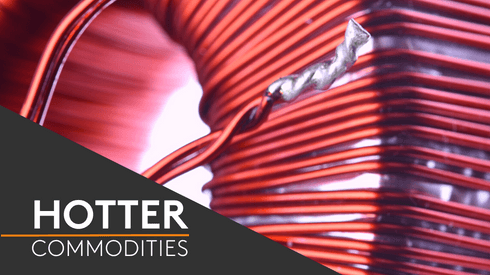“In terms of size, [lithium] is now at a level where it can support an actively traded contract. We’re expecting this market in physical terms to grow by an order of magnitude over the next 10 years so that gives us ample runway, but we’re at critical mass it terms of size today,” Martin said during an interview at Fastmarkets’ virtual Lithium Supply & Markets conference.
Lithium production is expected to grow to 430,000 tonnes in 2021, up 21.5% from with a forecast 354,000 tonnes (lithium carbonate equivalent) in 2020. Demand will grow to 345,000 tonnes next year, compared with an expected 285,000 tonnes this year, according to data from Fastmarkets’ battery raw materials research team. About 920,000 tonnes of lithium will be required by 2025 to meet forecast demand from the growing electric vehicle (EV) and energy storage sectors.
“It is still a fairly small market today but one that is growing so rapidly and with a high degree of price volatility are those factors that really offset that,” Martin said.
Last week the LME said it could launch its lithium contract as early as the first half of next year, depending on market readiness, to be cash-settled against Fastmarkets’ price assessment for lithium hydroxide monohydrate, min 56.5% LiOH.H2O, battery grade, spot price, cif China, Japan & Korea.
A single contract can be used for the hedging lithium exposure across the value chain, Martin said, even though different lithium grades and compounds are used according to consumer certification.
“Concentrating liquidity into a single contract is always the right approach, especially in a fairly nascent market as we have with lithium. If you look at the price histories across the different markets of lithium then almost invariably you find very high levels of price correlation, so having a single lithium contract is almost certainly going to be a fantastic proxy pricing mechanism for anyone exposed up and down the value chain,” Martin said.
Fastmarkets’ assessment for lithium carbonate 99.5% Li2CO3 min, battery grade, spot prices cif China, Japan & Korea stands at $6-7.50 per kg as of the October 22 assessment, down 32.5% from $9-11 per kg a year ago.
The lithium hydroxide monohydrate 56.5% LiOH.H2O min, battery grade, spot price cif China, Japan & Korea is down 25% at $8.50-9.50 per kg as of October 22 from $11-13 per kg a year ago, according to Fastmarkets data.
Lithium use by battery manufacturers is subject to certification processes and investments are made in production processes built around particular specifications, but that does not limit the use of flexible pricing or development of risk management tools, Alex Harrison, editorial and pricing director at Fastmarkets, added.
“The question about specification is one that exists in every market… there’s a bit of a false dichotomy in this debate on specialty product versus commodity,” Harrison said.
“Clearly lithium is a specialized commodity of sorts but all commodity markets require specifications for their material – look at iron ore, copper concentrate, manganese ore, primary aluminium. Pricing in those markets isn’t determined solely by the LME, but by the other elements that are in the material by the impurities, the origin, the producer and so on,” he continued.
“There’s no suggestion that every kilogram of lithium should change hands at exactly the same price. What we’re looking at is prices that are representative, carefully defined, [and that] buyers and sellers can use whether there’s a premium or discount with their own counterparty,” Harrison added.
The lithium market is some time away from requiring individual contracts to offset price risk in different products along the value chain, delegates heard.
“Once you have a very mature market as we have with primary aluminium, then it makes sense to offer things like regional premium contracts, or a cash-settled alumina contract. That gives participants the ability to manage their price risk at a slightly more granular level, but typically for those types of more niche products to be successful you need some type of dislocation in the market. …I certainly think in lithium we’re years away from that,” Martin said.






